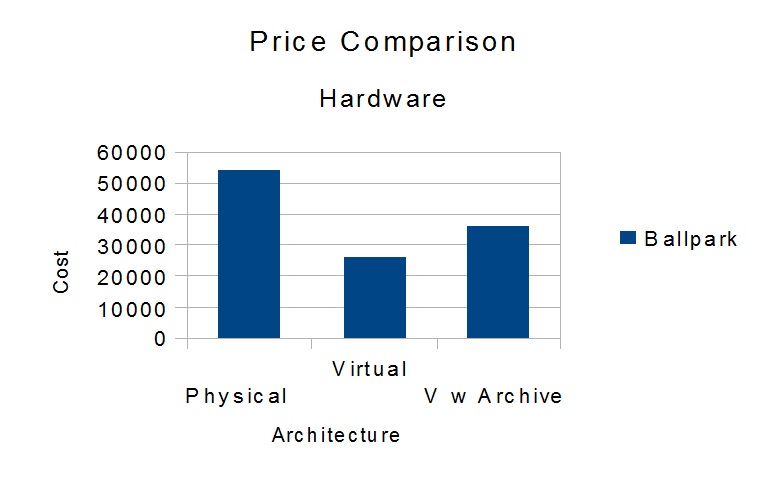Imagine an small to mid-sized enterprise which needs accounting, document management, e-mail, a central file repository, centralized printer management, and a central anti-virus console. These services can be put on discrete servers, along with, using Microsoft’s authentication model, a redundant pair of machines described as “Domain Controllers.” Add an “Intranet” and a central backup system and you’re looking at 10 servers, at a cost, as shown in Table 1, below, in the neighborhood of $54,000.
The advantage of discrete servers for discrete functions is that maintenance on one system does not effect any others. By wrapping the logical functions – accounting, e-mail, etc – into “virtual machines” we get the same advantages – maintenance and upgrades to one system do not effect other systems – while reducing the total number of physical machines.
This can be “Virtualized” onto two or three servers at a cost, as shown in Table 2, below, in the neighborhood of $26,000 to $36,000. These are summarized in table 0, below.
| Price Comparison | |
| Item | Ballpark |
| Physical | $54,000.00 |
| Virtual | $26,000.00 |
| V w Archive | $36,000.00 |
| Table 0 | |
This savings also scales. Larger enterprises, which require more servers, may realize a 10 to 1 server consolidation.
